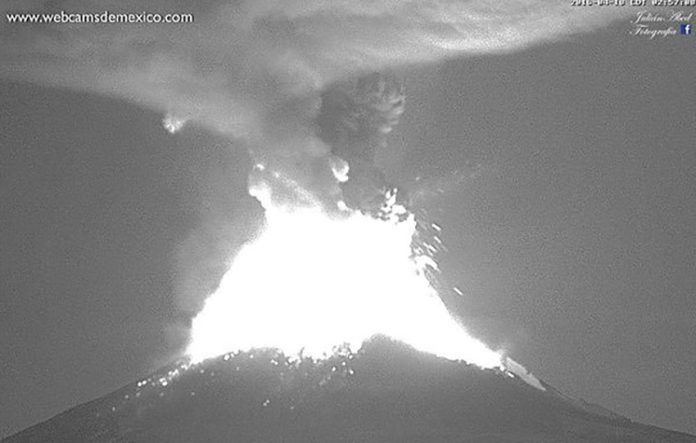Today is a special day for Popocatépetl: it is the 25th anniversary of renewed activity at the volcano near Mexico City.
El Popo, as it is also called, is iconic of the Valley of México, along with the dormant volcano Iztaccíhuatl. Its name is from Náhuatl and means “smoking mountain.” Its partner, whose name translates to “white woman” or “sleeping woman,” is a long dormant volcano which resembles a woman sleeping on her back.
The two are important to the city’s identity although most days they are not visible due to pollution.
Popocatépetl is generally an active volcano, but it goes through cycles. It is the most active of Mexico’s volcanos, and with 25 million people living less than 100 kilometers from the crater, it is also one of the most potentially dangerous.
On December 21, 1994, the mountain woke up after 56 years of tranquility to blow ash on Puebla. The eruption caused alarm, especially on the volcano’s northeastern side, which received most of the ash fall and towns in that area were evacuated.
The event prompted Mexico’s National Disaster Prevention Center (Cenapred), with support from the United States National Geological Service, to install stations to monitor the volcano. Today, that monitoring goes on 24 hours per day, and webcams allow the public to view what is going on in real time. The monitoring allows for research and to identify any anomalies in the volcano’s activity.
Most of that activity has been the creation and destruction of domes inside the crater. Ash from different events has regularly reached Mexico City and Puebla, and has fallen in states as far away as Querétero and Veracruz. There have been some lava flows, including one that reached the nearest human settlement, Santiago Xalitzintla in Puebla.
The federal government has also implemented an alert and evacuation system called the Semáforo de Alerta Volcánica (Volcanic Alert Signal) depending on the volcano’s status. Green means that the volcano is not currently active and yellow has three phases which range from some signs of activity to persistent activity in the crater. Red (also called alarm) has two phases indicating activity outside the crater and immediate danger to the surrounding area.
Popcatépetl, currently in Phase 2 Yellow, can be seen online on YouTube.
Source: Milenio (sp)
